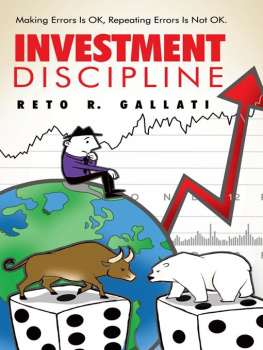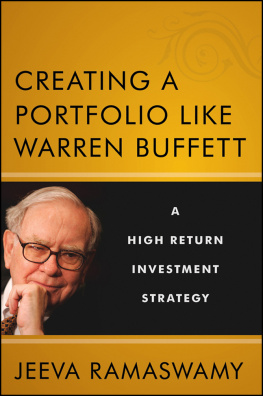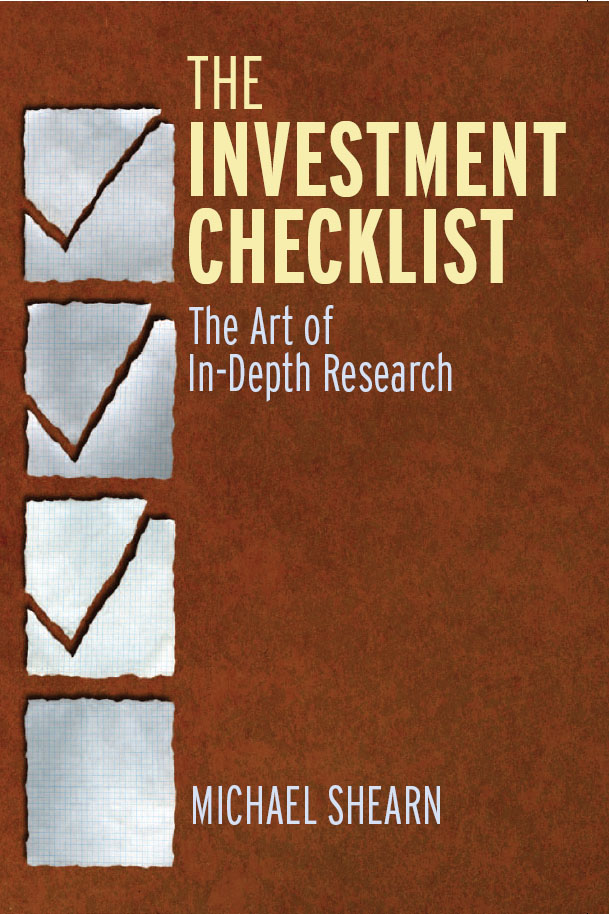Contents

Copyright 2012 by Michael Shearn. All rights reserved.
Published by John Wiley & Sons, Inc., Hoboken, New Jersey.
Published simultaneously in Canada.
No part of this publication may be reproduced, stored in a retrieval system, or transmitted in any form or by any means, electronic, mechanical, photocopying, recording, scanning, or otherwise, except as permitted under Section 107 or 108 of the 1976 United States Copyright Act, without either the prior written permission of the Publisher, or authorization through payment of the appropriate per-copy fee to the Copyright Clearance Center, Inc., 222 Rosewood Drive, Danvers, MA 01923, (978) 750-8400, fax (978) 646-8600, or on the Web at www.copyright.com . Requests to the Publisher for permission should be addressed to the Permissions Department, John Wiley & Sons, Inc., 111 River Street, Hoboken, NJ 07030, (201) 7486011, fax (201) 7486008, or online at www.wiley.com/go/permissions .
Limit of Liability/Disclaimer of Warranty: While the publisher and author have used their best efforts in preparing this book, they make no representations or warranties with respect to the accuracy or completeness of the contents of this book and specifically disclaim any implied warranties of merchantability or fitness for a particular purpose. No warranty may be created or extended by sales representatives or written sales materials. The advice and strategies contained herein may not be suitable for your situation. You should consult with a professional where appropriate. Neither the publisher nor author shall be liable for any loss of profit or any other commercial damages, including but not limited to special, incidental, consequential, or other damages.
For general information on our other products and services or for technical support, please contact our Customer Care Department within the United States at (800) 7622974, outside the United States at (317) 5723993, or fax (317) 5724002.
Wiley also publishes its books in a variety of electronic formats. Some content that appears in print may not be available in electronic books. For more information about Wiley products, visit our web site at www.wiley.com .
Library of Congress Cataloging-in-Publication Data:
Shearn, Michael, 1975
The investment checklist : the art of in-depth research / Michael Shearn.
p. cm.
Includes index.
ISBN 9780470891858 (cloth); ISBN 9781118149430 (ebk); ISBN 9781118149447 (ebk); ISBN 9781118149454 (ebk)
1. Investment analysis. 2. Portfolio management. 3. Investments. I. Title.
HG4529.S47 2011
332.632042dc23
2011021446
For my wonderful wife, loving parents, and beautiful daughters.
Preface
This book can help you make better investment decisions by helping you truly understand the companies youre investing in.
If youre like most investors, you make mistakes when you rush into an investment idea without doing the proper work to understand the value of a business. By rushing, you are essentially betting on probabilities that certain assumptions will work out, instead of basing your investment decision on real analysis .
Too often, investors buy stocks by relying on recommendations from other investors, or on hunches, or because of isolated facts theyve heard or read about a business. When you make your purchase decisions on these factors and do not take the time to thoroughly understand the businesses you are buying, youre more prone to make investment mistakes. Your decision-making then becomes dangerous because you dont really know enough, and youre relying on other people and the information (or misinformation) they provide about a particular stock. Instead, your investment purchases should be based on understanding the value of a business through in-depth research . If you truly understand the value of a business, then you will be in a position to recognize investment opportunities and can more easily make buy or sell decisions.
Dont be daunted by the idea of in-depth research. This book makes the research manageable (more about that in a minute). Also, Im sure you do research all the time before you spend your hard-earned money: For example, think about any major purchase youve made in your lifewhether its a house, or a car, or an expensive piece of jewelry or electronics. Before you spent all that money on whatever it was, you probably spent some time researching to make sure your money would be well spent. If you were buying a house, you (or your realtor) researched the price of other houses in that neighborhood and other amenities that would make that house desirable (e.g., the school system, ease of commuting, neighborhood parks or pools or tennis courts or shopping, etc.). The more you know about your purchase, the more easily you will be able to recognize a good deal. The same is true when buying or selling a stock. The more you understand the dynamics of a business and the people operating it, the better the odds that you will be able to recognize a good deal on a business.
Many professional investors believe that in-depth research is a waste of time. To them, great investment decisions boil down to a few simple factors, such as an extremely low stock price. I used to subscribe to this theory myself, but over time, I discovered I was wrong . As I came to appreciate that the value of a business cannot be condensed into a few simple factors, I searched for books that would teach me how to value a business and invest intelligently in stocks. I was looking for a practical book instead of one that focused on broad concepts. In spite of the fact that there are hundreds of books written on the subject of investing, I honestly couldnt find one that truly helped me.
My instinct after failing to find a good investing framework was to over-research potential investments. I often ended up reading everything I could get my hands on about a potential investment. As a result, I subjected myself to information overload and was unable to recognize good information. I also kept repeating investment mistakes, such as paying too much for a business or partnering with the wrong management team.
So I set out to establish a systematic process to force me to think through my investment ideas more carefully and help me avoid repeating the same investment mistakes. Over the past 10 years, I began to use checklists of questions I needed to answer to make informed investment decisionsquestions that would guide me in learning about a businesss competitive position, customer positioning, and management strength. To come up with the questions, I studied the past mistakes I had made investing, and I read many books about the common mistakes made by investors and executives. I interviewed private equity managers, venture capitalists, entrepreneurs, chief executive officers (CEOs), hedge fund managers, mutual fund managers, and private investors to help me prepare a more comprehensive list of questions. During the stock market decline in 2008 and 2009, I made significant improvements to the checklists as the decline exposed weaknesses in my investment process.
As I used the checklists, I discovered that if I could answer the majority of the questions on the checklist, I could more easily value the business by minimizing the number of assumptions I was making about a businesss future prospects. If I was unable to answer a question on the checklist (such as are its managers honest?), then I could identify the potential risks I was taking in an investment and the areas that I needed to spend more time researching.



![Keith A. Allman [Keith A. Allman] - Impact Investment: A Practical Guide to Investment Process and Social Impact Analysis](/uploads/posts/book/124124/thumbs/keith-a-allman-keith-a-allman-impact.jpg)




